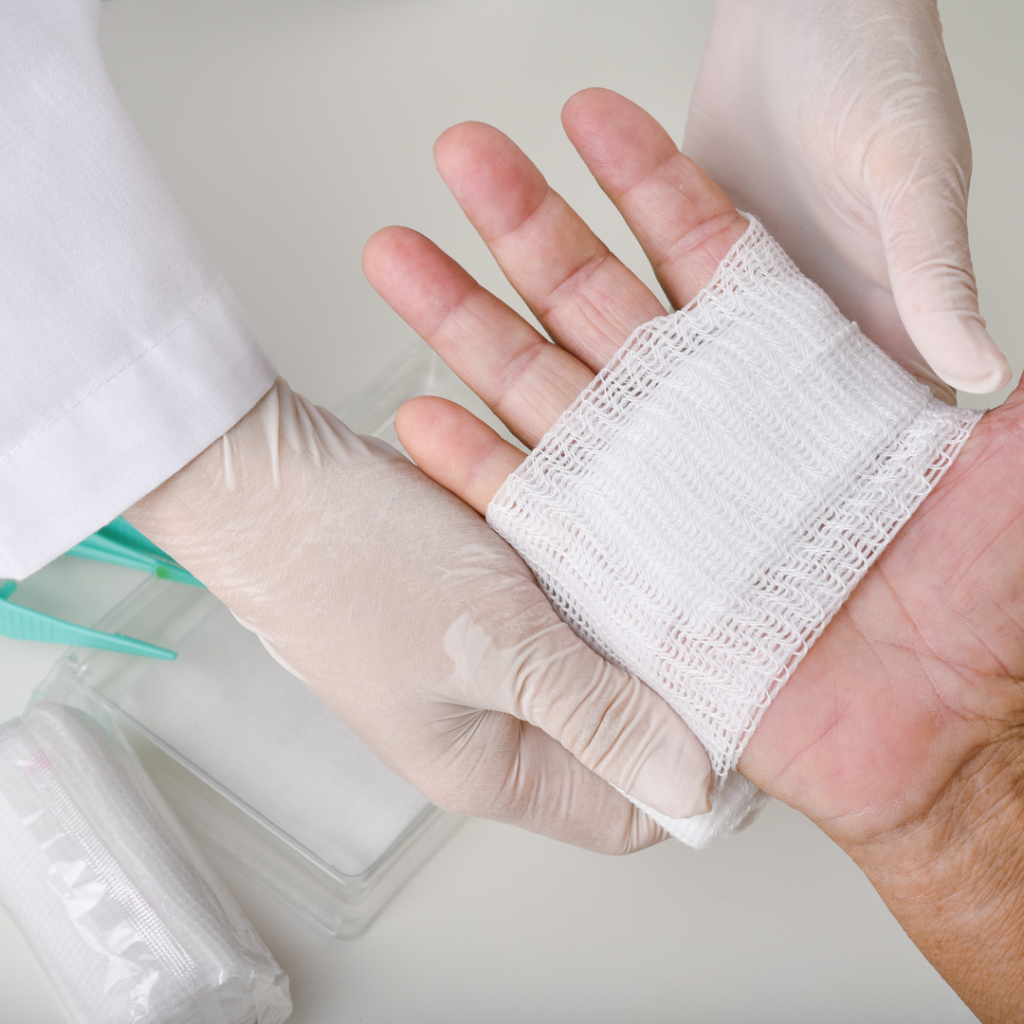In the United States, chronic wounds affect around 6.5 million patients. The burden of treating chronic wounds is growing rapidly due to increasing healthcare costs, an aging population, and a rise in diabetes and obesity worldwide. It is estimated that more than $25 billion is spent annually on chronic wound care management in the U.S. alone
Understanding the science behind wound healing and the potential role of collagen in this process can help guide innovation for companies developing advanced wound care products and technologies.
The Role of Collagen in Wound Healing
Collagen is the most abundant protein in the human body, essential for the formation of bones, skin, muscles, tendons, and ligaments. It serves as a natural scaffold that supports cell migration and new tissue formation during wound repair. Collagen-based materials help create a favorable wound environment by maintaining moisture, regulating enzymatic activity, and supporting tissue regeneration.

Integrating Vinh Wellness Collagen into Advanced Wound Dressings
Vinh Wellness offers a portfolio of high-quality collagen peptides derived sustainably from freshwater Pangasius fish skin. Our collagen peptides display excellent solubility and bioavailability and come in a range of molecular weights, primarily between 500 and 1,000 Daltons, enabling flexible integration into diverse wound dressing formats.
Collagen Formats and Their Scientific Basis
Sheets and Sponges: These are typically formulated from high molecular weight native collagen (>100,000 Da). Their intact triple-helix structure provides the physical scaffolding necessary to support tissue growth and retain moisture in wounds.
Powders and Gels: Formulated mainly from low molecular weight collagen peptides like Vinh Wellness’s GPX-4 and related products (500–1,000 Da), these forms facilitate rapid absorption and act as bioactive agents. They stimulate biological activities such as fibroblast activation and angiogenesis, promoting extracellular matrix remodeling without forming physical scaffolds.
Impact of Molecular Weight on Performance
Molecular weight is a critical factor influencing collagen’s role in wound healing. High molecular weight collagen supports the physical architecture required for scaffold-based dressings, while low molecular weight collagen peptides, such as those provided by Vinh Wellness, are highly bioavailable and active at the cellular signaling level, accelerating tissue repair and regeneration. This molecular distinction allows precision in designing wound care products tailored to specific healing mechanisms and wound types.
Translating Collagen Innovation into Wound Healing Solutions
As a trusted provider of high-quality collagen peptides, Vinh Wellness provides scientifically characterized collagen peptides ideal for advanced wound care formulations. While clinical efficacy depends on final product design and medical device development by partners, the unique properties of Vinh Wellness collagen peptides — including their traceability, sustainability, and targeted bioactivity — make them strong candidates for next-generation wound healing technologies combined with antimicrobial agents or delivery systems.
Future Directions
Innovations in collagen wound dressings continue to emerge, including engineered scaffolds, nanoparticle and hydrogel-based delivery technologies, and smart dressings integrating biosensors to monitor healing progression. Vinh Wellness collagen peptides are well-positioned to complement these advancements, enabling multifunctional solutions that improve patient outcomes and quality of life.
Conclusion
Collagen remains central to wound healing science and technology. High molecular weight collagen delivers structural support, while Vinh Wellness’s low molecular weight collagen peptides offer potent, bioactive functions. Together, these materials provide versatile building blocks for innovative wound care products, supporting accelerated healing and enhanced recovery.
JOIN OUR WEBINAR
GPX-4: Science-Backed Collagen Tripeptides Supporting Multi-System Health
Available Session:
22 October 2025 | 4:30 PM CEST
29 October 2025 | 4:30 PM GMT